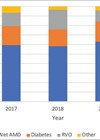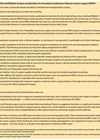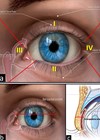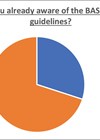Ophthalmology archive for 2021
My ophthalmic elective: Harvard Medical School
Medical electives are an excellent opportunity to learn, enjoy and explore countries and their healthcare systems. I was grateful to do mine in ophthalmology at Harvard Medical School (HMS). This article will share my personal experience working at HMS with...
Safety and efficacy of a nurse-led intravitreal injection service using an Precivia® injection assist device
Nurse-led intravitreal injections have become of great importance for busy eye units. In this article, the authors present safety data from five years of a nurse-led service with the use of the Precivia® intravitreal injection assist device. Intravitreal injections of...
Working smarter not harder: How to transform eyecare delivery in the United Kingdom (part 1)
Are we doing enough to meet the current demands on ophthalmic services? In part one of a two-part series (see Part 2 here), Rosalind Harrison takes a look at how efficiency has been improved in eyecare services in the US....
What’s new in glaucoma? Clinical trials drive practice changes, surgical advancements gather pace
Rod McNeil reviews the latest developments in the treatment of glaucoma in the UK. Primary open-angle glaucoma (POAG), which accounts for over two-thirds of all glaucoma cases, has an estimated UK prevalence in 2017 of approximately 2% of people over...
A guide to the Multi-Speciality Recruitment Assessment (MSRA) exam
The MSRA exam is a mandatory part of the application for ophthalmology specialist training in the UK. It is a computer-based exam which is designed to assess junior doctors with foundation level competence. It is used for entry to postgraduate...
Valuable resources for FRCOphth Part 1 exam preparation
The FRCOphth Part 1 exam is a difficult exam with an average pass rate of 46% in the last year. It is a requirement before entry into the third year of ophthalmology specialty training (OST). Passing this exam during foundation...
Could Twitter boost the impact of ophthalmic journal articles?
*Equally contributing co-first authors. The authors investigate the link between ‘tweets’ and citations for 155 articles from five key ophthalmology journals. Social media’s impact on our lives has been significant, allowing easy discussion of topics worldwide. An increasing number of...
Streamlining cataract lists: how are you managing it?
Mr Jonathan Ross, in conversation with Ms Bita Manzouri, provides a personal perspective on challenges and opportunities shaping the future of cataract surgery services across the hospital eye service. Redesigning cataract pathways in response to COVID-19 Bita Manzouri: Over the...
Periocular burns: a literature review of classification, management protocols and outcomes of treatment
The author provides a review of the current literature regarding the principles of classification, management protocols of acute ocular and periocular burns and the role of the burn and oculoplastic surgeon involved in their care. More than two-thirds of facial...
Headache: the clue is in the eyes
A worrying cause of headache is raised intracranial pressure (ICP). Papilloedema is a vital clue for accurate diagnosis and performing fundoscopy is essential in detecting this sign. The authors review the use of fundoscopy in their own district general hospital....
My top five Apps for UK-based general ophthalmologists
The way we interact in society is changing as more of us are becoming ‘digital natives’: individuals who are in close contact to the internet and expect to integrate smart devices with our daily lives. This was stereotypically a term...
DMEK vs. UT-DSAEK: has the debate been finally concluded?
In recent years the surgical treatment of corneal endothelial dystrophy has progressed tremendously. Descemet’s membrane endothelial keratoplasty (DMEK) is the newest iteration in the line of rapid surgical advances that has taken place. However, the previously accepted gold standard prior...
















